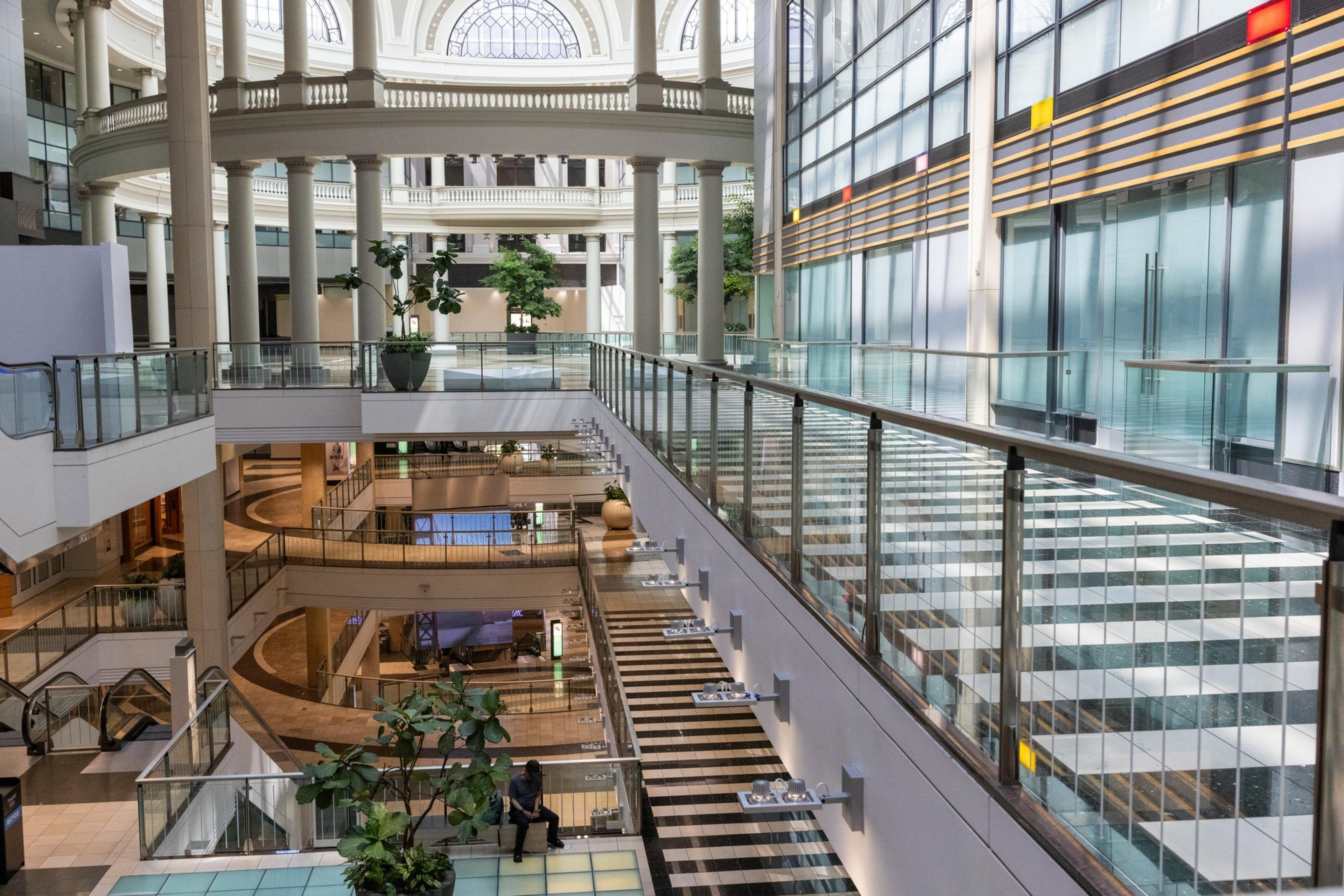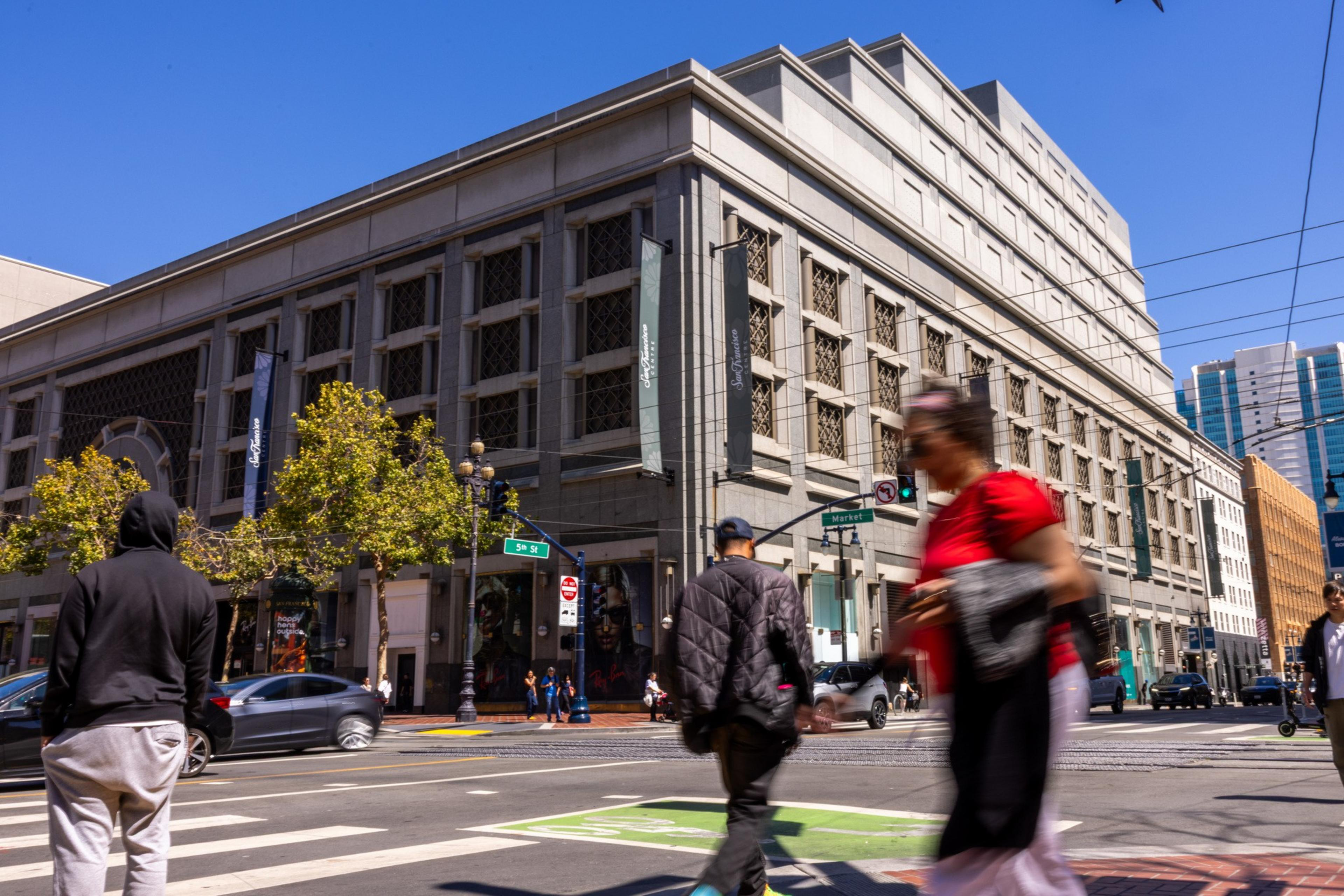Good luck finding a place to sit, because this restaurant gets slammed every day.
Like any great urban lunch spot, it’s filled with an eclectic mix of office workers, city employees, college students, construction crews, and cops.
The major difference though, is that this restaurant is tucked away in a largely abandoned building, one of the last holdouts in the dying San Francisco Centre Mall.
It’s Panda Express, America’s favorite spot for sticky-sweet orange chicken.
At the once-great downtown shopping destination, the Chinese American icon remains not only open but fully staffed, despite the fact that 90% of its neighbors have fled. Up to 10 people work at a given time to make sure the line is always moving, serving pans are regularly replenished, and tables are wiped clean the moment a guest steps away.
In one direction, when the woks are firing and diners are talking over Styrofoam containers of food, it looks like a normal day in the mall. But turn around, and you’ll see empty storefronts, overseen by security guards with little to patrol other than the bathrooms, elevators, and historic rotunda.
On a recent weekday, I took my colleague Han Li, a homesick Chinese expat, there for lunch to witness this miracle survivor firsthand. Outside of my semi-regular trips to the mall to cover its ongoing foreclosure, I had heard from real estate sources that the downtown Panda Express, against all odds, continues to bring in millions in annual revenue.
Han has a nostalgic and traumatic history with the restaurant chain. When he moved to the U.S. 10 years ago to pursue his graduate degree at the University of Southern California, it was the only remotely Asian food option on campus, so he ate it almost every day and has tried every item on the menu.
On the day we visited, he was less concerned about the food than shocked at the state of the mall. “Oh, my God,” he said every 10 seconds as we walked through the signless storefronts to the food court. “What happened here?”

We both opted for the standard two-item combo plate, and Han started his order with white rice and steamed veggies. “Real Chinese don’t order fried rice or chow mein,” he said with a smirk. Panda’s signature orange chicken was also off the table, because it’s an “American” dish, he said. Instead, he prefers sliced teriyaki chicken and the stir-fried varieties that more closely resemble the food back home.
We ate and marveled at the steady stream of people filing down the stairs at 2 p.m. Students from the nearby University of Pacific dental school and tourist families occupied tables. Like us, they were drawn to a place where, for less than $15, you can feed yourself and still have leftovers plus a fortune cookie.
According to loan documents, the mall’s occupancy rate dropped to 7% after Bloomingdale’s closed in April. This month, the food court lost mall staples Charleys Cheesesteaks and Wetzel’s Pretzels — leaving Panda Express, Shake Shack, and Sarku Japan the last remaining dining options at the 1.5 million-square-foot San Francisco Centre.

Representatives of Panda Express declined to comment, but the workers at the mall indicated that after holding strong for years, sales at that location had started to dip in line with the SF Centre’s occupancy rate. They too were struck by the uncanny experience of being able to keep the lights on as so many businesses have gone dark.
Panda Express mall locations tend to have daily sales of $5,000 to $13,000, according to a source familiar with the company’s business. Restaurants in major metropolitan locations usually perform on the high end of that range.
By comparison, the critically acclaimed (opens in new tab) Mashaallah Halal Pakistani Food in the same flagging food court sees about $4,000 in sales on a day when there’s a convention in town, according to owners Mohammad and Rabia Waqar.
The couple said they will close the mall location within three months to focus on their new restaurant down the street at the site of the former Mathilde French Bistro on Fifth and Folsom. “We just couldn’t wait any longer,” Mohammad Waqar said. “We want to do more than just survive.”
Back at Panda, I was expecting Han to tell me we could have had a better lunch in Chinatown, but he mostly expressed admiration for how the restaurant manages to attract diners to a mall where there’s not much else.
It feels like only a matter of time before the fluorescent lights are flicked off for the last time. I couldn’t help but think that, as city politicians are hellbent on importing a different kind of panda, wouldn’t it be nice if they just celebrated the one we already have?
